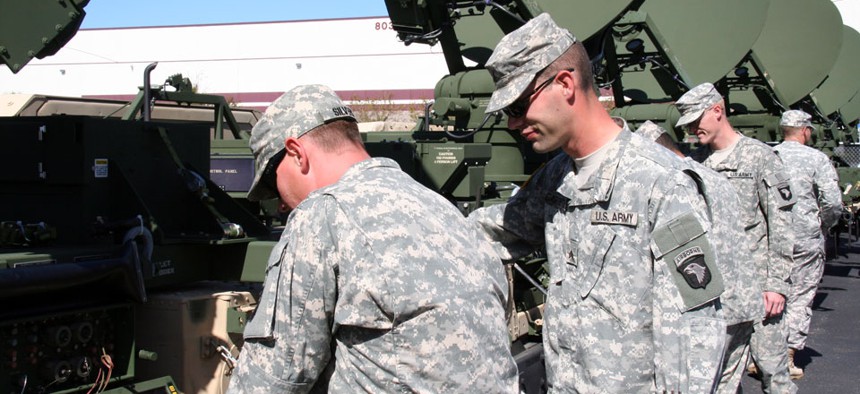Congress Slashes the Army’s Tactical Communications Program

U.S. Army
Lawmakers gave the Navy’s Next Generation Network a $105 million boost in 2014.
Congress slashed funds for a key Army tactical communications system and boosted spending for the Navy’s Next Generation Enterprise Network in the 2014 omnibus appropriations bill the House passed yesterday.
The Defense Appropriations Committee chopped $204 million from the Army’s $974 million budget request to buy satellite gear for companies and battalions under its Warfighter Information Network-Tactical program developed by General Dynamics.
The equipment includes small Ka- and Ku-band satellite receivers installed in Humvees and other tactical vehicles under the soldier network extension portion of the WIN-T project. The receivers are intended to support communications while troops are on the move. In December 2012, the Pentagon’s test and evaluation directorate reported that the extension “did not support commanders while on‑the‑move but served as an alternate communications means while at-the-halt.”
Congress also cut $156 million from the Army’s requested $267 million procurement budget for its troubled next-generation battlefield intelligence system, the Distributed Common Ground System-Army under development by Northrop Grumman. The Pentagon’s test and evaluation directorate found the program “is not operationally effective, not operationally suitable, and not survivable.”
Lawmakers also sliced $33 million from the Army’s $103 million request for the Joint Battle Command-Platform, which is intended to be the principal command and control system for the Army and Marine Corps.
While the Army programs took hits, Congress gave the Navy’s requested $1 billion enterprise IT budget a $105 million boost for the NGEN program, designed to support 800,000 sailors and Marines in the United States. HP Enterprise Services started work on NGEN last November after overcoming a protest of the $3.5 billion contract awarded last June.






